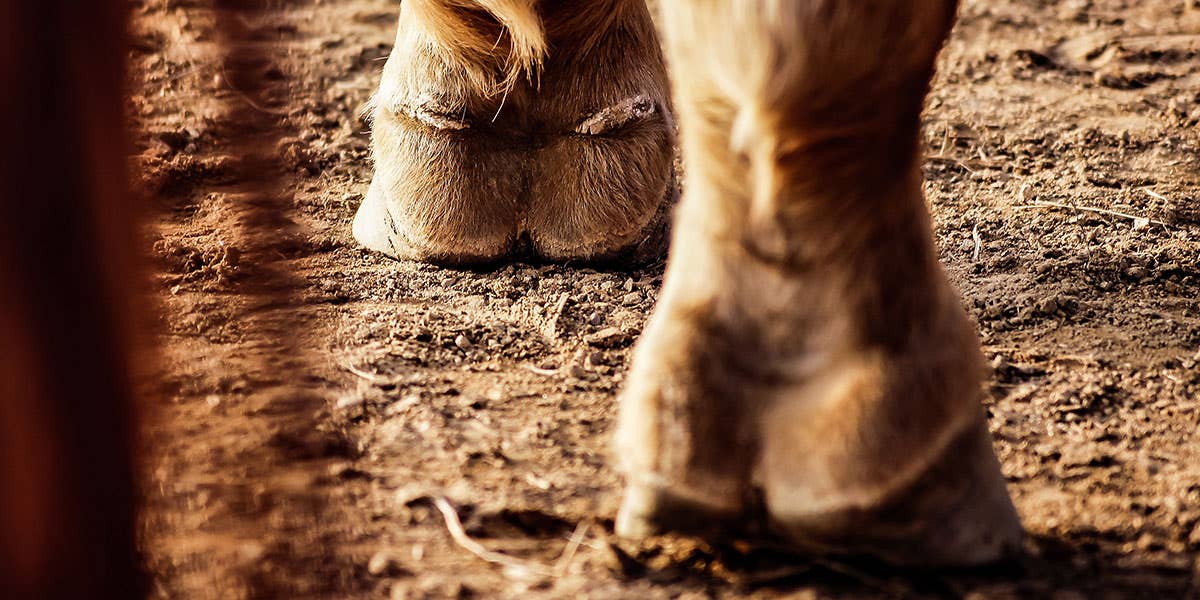5 min read


Wet, rainy and muddy – uh-oh, is your horse at risk of developing mud fever? This is your guide to this common winter issue.
One of the most prevalent conditions we see in horses throughout winter in Australia is Mud Fever. It can be an extremely tricky condition to get under control and at times cause major pain for your horse.
What is Mud Fever?
Mud Fever is a form of Pastern Dermatitis, sometimes interchangeably called Greasy Heel or Scratches. Most commonly this Pastern Dermatitis is referred to as Mud Fever when the symptoms expand from the heel and fetlock region up onto the cannon.
Pastern Dermatitis is a skin infection that affects a horse’s legs. Despite the common name of Mud Fever, fever is not a common symptom but instead refers to the inflamed scabs that develop as a result of the disease. This disease can initially be only uncomfortable or irritating, but then progress to signs of lameness and severe sensitivity. In extreme cases, cellulitis can occur, which requires veterinary intervention.
What causes Mud Fever?
Despite its name, it is not just mud that can create this problem. The primary cause of this form of Pastern Dermatitis is the damage to the equine skin barrier, which allows the penetration of bacteria (most commonly dermatophilus congelensis) or fungi into the layers of the skin, resulting in inflammation, swelling, serous oozing and the resulting scab and hair loss.
Horses with prolonged exposure to wet conditions are at higher risk of developing mud fever, as are:
- Horses that regularly chew or lick their pastern region, such as those with mites
- Horses with feathers
- Horses with nonpigmented skin
- Horses that reside in paddocks with areas that regularly churn up – including the arena (as soil and sand can both increase exposure to the bacteria and irritate any sensitive skin).
Other cases of Pastern Dermatitis, which look very similar to the dermatitis induced from prolonged moisture and damaged skin barrier, include photosensitivity, allergic dermatitis, chorioptic mange (which damages the hair follicle and skin) and a less treatment-responsive condition called Chronic Progressive Lymphodema.
How to treat Mud Fever
Now here is the tricky part – because Mud Fever can be mistaken for a number of other forms of Pastern Dermatitis, it’s best to check with your vet should your horse present with these symptoms for the first time.
If confirmed the form of Pastern Dermatitis most likely induced from moisture, the recommended treatment includes:
- Provide the horse with an environment to keep the skin of the lower limbs dry, clean and protected from further abrasion.
- Don’t apply anything to the skin that will further damage the skin surface. Avoid the use of chemicals (sulfur products, methylated spirits, bleach, sump oil etc.).
- The scabs harbour the bacteria. Soften all scabs with warm water and then remove. Take care to dispose of these scabs rather than to let them contaminate the environment.
- For mild cases, apply a topical 2-3% chlorhexidine solution (do not scrub!) to the affected areas twice daily for a minimum of three weeks.
- If the area is red or ulcerated, then a topical ointment such as CEVA Filta Bac will be soothing and protective.
- If severe lesions are present or a poor response is seen to the above, then topical antibiotics will be required necessitating a veterinary consultation. Remember, most of the clinical signs associated with Mud Fever are the result of a secondary bacterial infection.
- A veterinary consultation is required if there is any swelling of the limbs, and appropriate antibiotics may be prescribed.
- Treatment is required for a minimum of three weeks.
- If there is limb swelling or lameness, your vet may also prescribe anti-inflammatories which will also provide pain relief.
- Minimise sun exposure during the acute inflammatory stage.
Should the dermatitis have been misdiagnosed as Mud Fever but indeed be caused by another condition, including the photosensitivity (which is very common), a different treatment approach may be recommended. Therefore, if you are uncertain, or not seeing a positive response, consult with your veterinarian.
How to prevent Mud Fever
Prevention in this case is far better than cure, but also easier said than done. Here are a few tips to reduce the likelihood of recurrence in horses susceptible to the condition:
- Remove your horse from wet and muddy conditions
- Implement sanitary conditions in stalls and paddocks – keeping these areas manure free will reduce the amount of bacterial contamination present in the environment and helps reduce the risk of infection
- Reducing access to mud (for example, moving water troughs and gates to reduce ground impact due to high traffic) can also reduce exposure to the bacteria in dirt
- Thoroughly dry legs (and body) after any rides, baths or wet weather
- You may need to consider clipping the hair on the legs to reduce the amount of moisture present – yes, even those beautiful feathers!
- Use CEVA Filta Bac regularly to create a barrier in horses that have chronic recurrence or as soon as you notice any changes
- Inspect your horses’ legs, fetlock and pastern thoroughly and regularly during wet or dewy weather
Mud Fever is an irritating condition for horses. But implementing preventative measures, monitoring your horses’ legs, and acting quickly if symptoms appear will minimise the chance of your horse being in extended discomfort.
At Horseland we’re here to help care for your horse’s wellbeing. We offer all the essentials to keep your horse healthy and happy, from wormers and equine first aid supplies, to supplements and pest control. Come visit us at your local Horseland store or browse products online.
Written in partnership with Sarah Gallagher, BAppSc Animal Science from CEVA.

